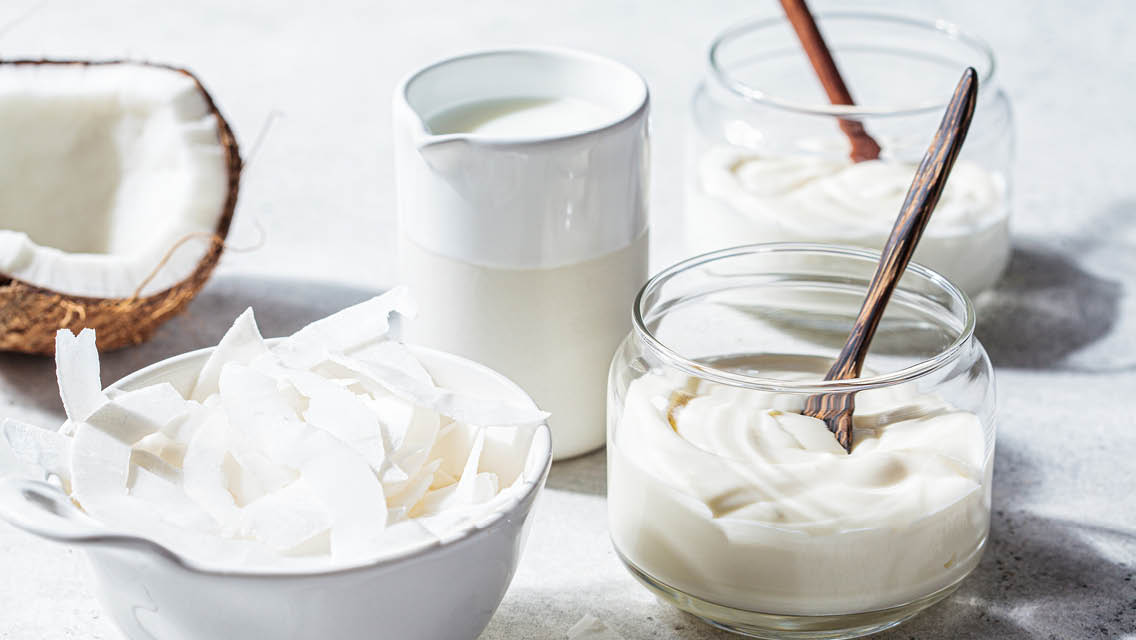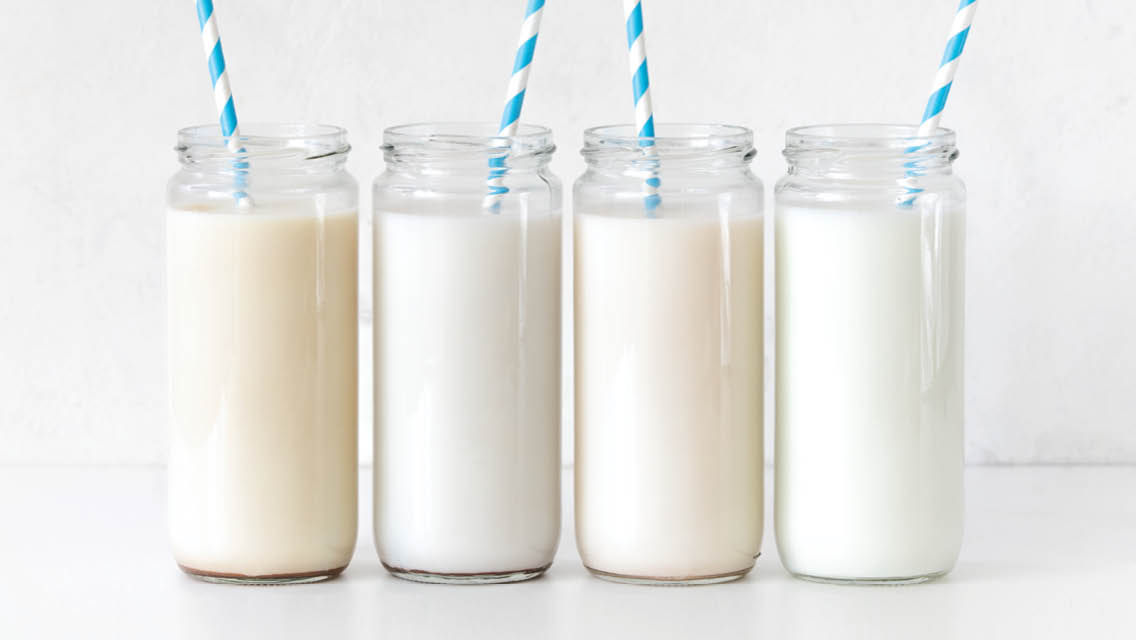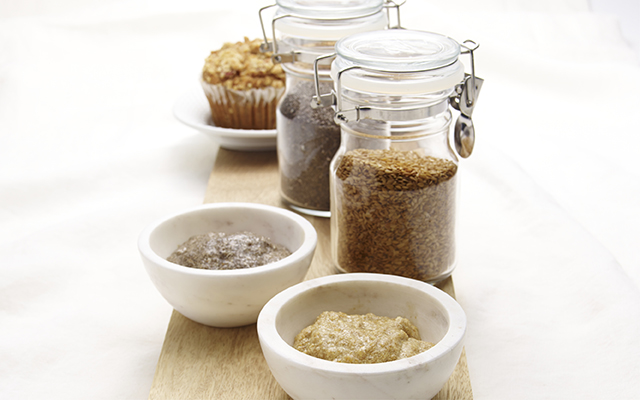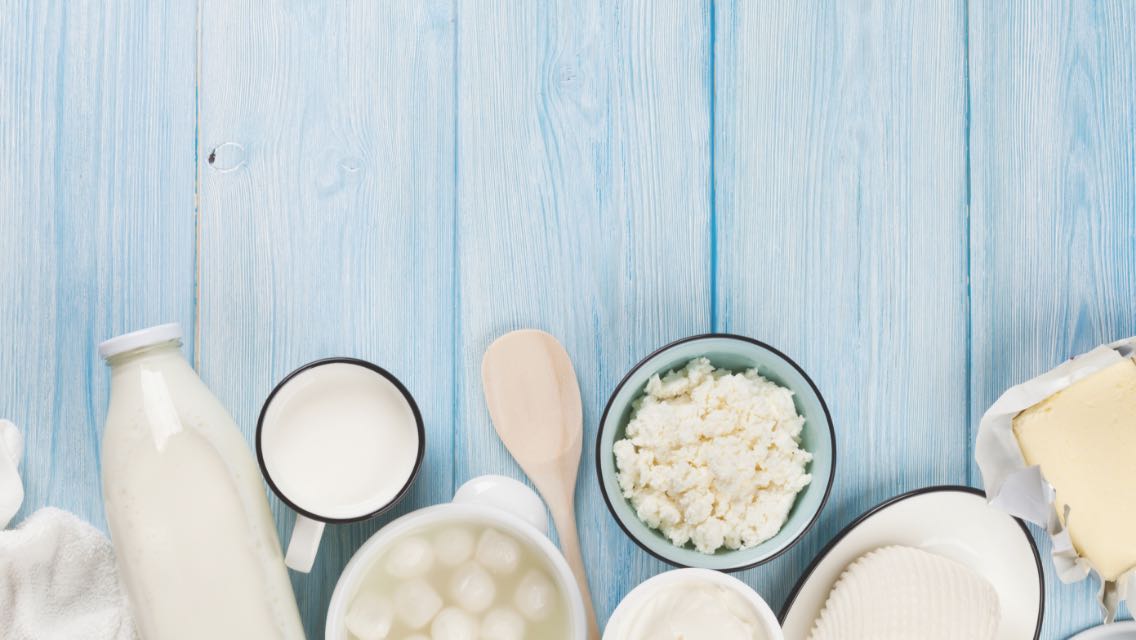Sections in this article:
Plant Milks ⋅ Canned Coconut Milk ⋅ Coconut Cream ⋅ Coconut Oil ⋅ Coconut Butter ⋅ Nutritional Yeast ⋅ Nondairy Cheese ⋅ Nondairy Yogurt
There are good reasons to consider cutting back on dairy, including research that suggests about 65 percent of us may have trouble digesting lactose after infancy. Beyond digestive woes, dairy consumption has been linked to a host of other inflammatory conditions, including irritable bowel syndrome, arthritis, acne, and more.
Eating a more plant-forward diet also offers substantial environmental benefits, in part because plants are generally less resource-intensive than most animal products. (For more on how what’s on your plate can help heal the planet, see “10 Steps to Climate-Friendly Eating“.)
Fortunately, we’re practically living in a dairy-free eater’s paradise, with a wealth of alt-milks and various plant-based cheeses available at many major retailers. Not only are these products now more widely distributed, but their quality has improved in recent years as the market has responded to the burgeoning interest in plant-based diets.
Still, not all of these dairy-free options will make a perfect substitute in your favorite cheese- or milk-based recipe. That’s why it’s useful to learn a little more about their properties, so you can know when to make a dairy-free swap.
1. Plant Milks
You’re likely to find half a dozen nondairy milks at your local market, including soy, rice, almond, cashew, oat, hemp, and flax. You can also buy coconut milk in a carton, which is a more diluted version of the canned variety. Because there’s more water present in carton coconut milk, it’s not a good substitute in a recipe that calls for the canned stuff.
You can use nondairy milk in practically any recipe that calls for cow’s milk, including soups, sauces, and baked goods, as long as you consider the flavor of the resulting dish. You might enjoy the nutty taste of oat milk in a batch of scones, for instance, but it might not be ideal in your potato-soup recipe. For a nondairy buttermilk sub, add a splash of vinegar or a squeeze of lemon juice to your plant milk of choice.
As with any packaged food product, be mindful of the ingredients when you’re shopping for nondairy milk: Many brands include sweeteners, flavorings, and other additives to optimize flavor and texture. (To skirt those entirely, try making your own alt-milk with our primer at “Nondairy Milk“.)
2. Canned Coconut Milk
“Coconut milk is a rich and luxurious plant-based alternative to heavy cream,” writes food blogger Kathryne Taylor in her book Love Real Food. “I always use unsweetened, canned coconut milk. I opt for regular (full-fat) coconut milk when I want super-creamy ice creams and rich sauces.”
Canned coconut milk is a crucial ingredient in many Thai and Indian dishes — the fat helps balance and carry the flavors of the spices (try our recipe, Indian-Spiced Greens With Coconut Milk and Chickpeas). And it’s a popular addition to many dairy-free desserts (like our Triple Coconut Rice Pudding).
You can also find lite canned coconut milk, which contains more water and less fat. It’s a fine substitute for the full-fat version if your recipe calls for only a small amount of coconut milk — but if you’re using half a can or more, opt for the full-fat variety for its richer flavor and smoother texture. (For more on why we choose full-fat whenever possible, go to “Skimming the Truth“.)
As with other plant milks, you’ll find that when shopping for coconut milk, the brand often makes a difference. Some include sweeteners, emulsifiers, and other ingredients that may alter the flavor and texture. If you choose a brand without added stabilizers, you’ll notice that the thick coconut cream will naturally rise to the top — so unless you want to use the cream separately, give the can a good shake before opening it.
3. Coconut Cream
Coconut cream can be a useful ingredient in its own right. “When full-fat coconut milk is left in the fridge, a thick layer of solid cream will rise to the top and congeal,” writes food blogger Angela Liddon in her book Oh She Glows Every Day. “This cream (known as coconut cream) can be whipped into a silky topping or used to thicken desserts.”
You may also be able to find small cans of pure coconut cream, often shelved next to canned coconut milk at the grocery store; just be sure you’re not accidentally picking up cream of coconut, a popular ingredient in mixed drinks that contains lots of added sugar.
Because of its high fat content and thick consistency, coconut cream is useful in dairy-free recipes that want a thicker texture (like our Vegan Chocolate Cheesecakes).
4. Coconut Oil
“Spreading a rumor of tropical flavor to any dish where it’s used, coconut oil tastes particularly good in granola, or as the cooking fat for roasted root vegetables,” writes chef Samin Nosrat in Salt, Fat, Acid, Heat. “Coconut oil is also the rare oil that’s solid at room temperature.” That particular quality makes it an excellent substitute for butter in recipes — such as pie crust — where a liquid oil wouldn’t do: You can cut coconut oil into flour the same way you would with butter, and the solid bits of oil will create a flaky pastry.
In the grocery aisle, you can choose between refined and unrefined (or “virgin”) coconut oil. “Virgin coconut oil contains more beneficial polyphenols than refined coconut oil, which has been extracted with the use of both heat and chemicals,” Liddon writes, adding that she uses refined coconut oil in recipes where she doesn’t want as much coconut flavor.
5. Coconut Butter
A mixture of coconut oil and solids, coconut butter is also solid at room temperature. Though you can use it as a substitute for butter in many baked goods — especially those with denser textures, like muffins and quick breads — keep in mind that it will add a strong coconut flavor to your dish.
It’s ideal for adding to foods that are already cooked, similar to the way that you might finish a dish with a pat of dairy butter. “It is rich, fragrant, and luxurious, with hints of vanilla,” Liddon writes. “A very small amount can transform a hot bowl of oats, a thick slice of toast, or a roasted sweet potato.”
6. Nutritional Yeast
“The name certainly does it no favors, but nutritional yeast is a game-changing ingredient for vegan home cooks,” writes Liddon. A deactivated yeast containing protein and B vitamins, it can bring a pleasantly savory flavor to soups, stews, pasta, roasted veggies, and more.
Top a salad with it for a subtle umami boost or sprinkle it on top of popcorn for a dairy-free snack with a cheesy flavor. Though it won’t impart the same melty texture as Parmesan or pecorino, you can also use it like you would grated cheese (as in our Anything Pesto).
7. Nondairy Cheese
Lots of dairy-free cheese products made with tofu, soy, or nuts make great substitutes for softer cheeses like ricotta, cream cheese, or even Brie. Look for nondairy soft cheeses at your grocery store, or try making your own Roasted Garlic Cashew “Chèvre”.
It’s harder to replicate the texture of a melty mozzarella or gooey cheddar in a plant-based product. Many dairy-free versions of harder or aged cheeses are mostly modified starches and palm oil, which may seem like a step back if your goal is to eat more whole foods. Keep in mind that lots of aged cheeses are naturally low in lactose, so you may be able to tolerate Parmesan, sharp cheddar, manchego, and similar varieties even if you’re dairy intolerant.
8. Nondairy Yogurt
You can find quite a few plant-based yogurts these days, including varieties made from almonds, cashews, oats, soybeans, coconuts, and peas. As with plant milks, you’ll want to review the list of ingredients: Many nondairy yogurt brands add sweeteners to make their products more palatable.
If you want the health benefits of yogurt without the dairy, opt for a brand that contains live active cultures, which will help support your gut microbiome. (For more on the health benefits of probiotics, see “Everything You Need to Know About Probiotics“.)
This article originally appeared as “Dairy-Free Delights” in the July/August 2021 issue of Experience Life.





This Post Has 0 Comments